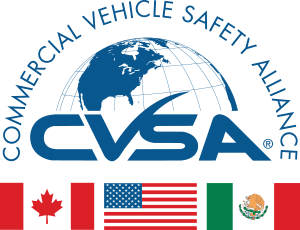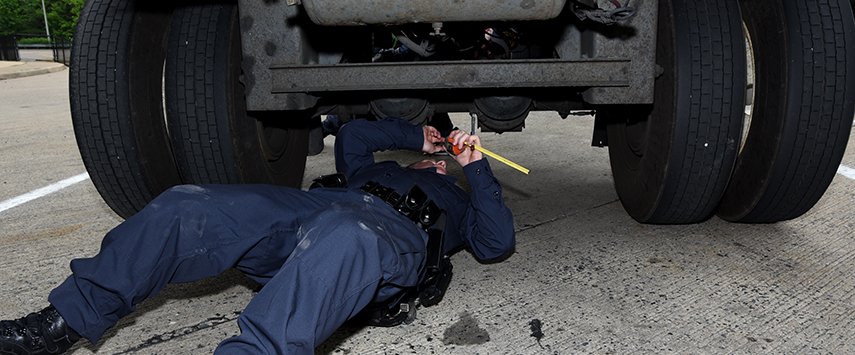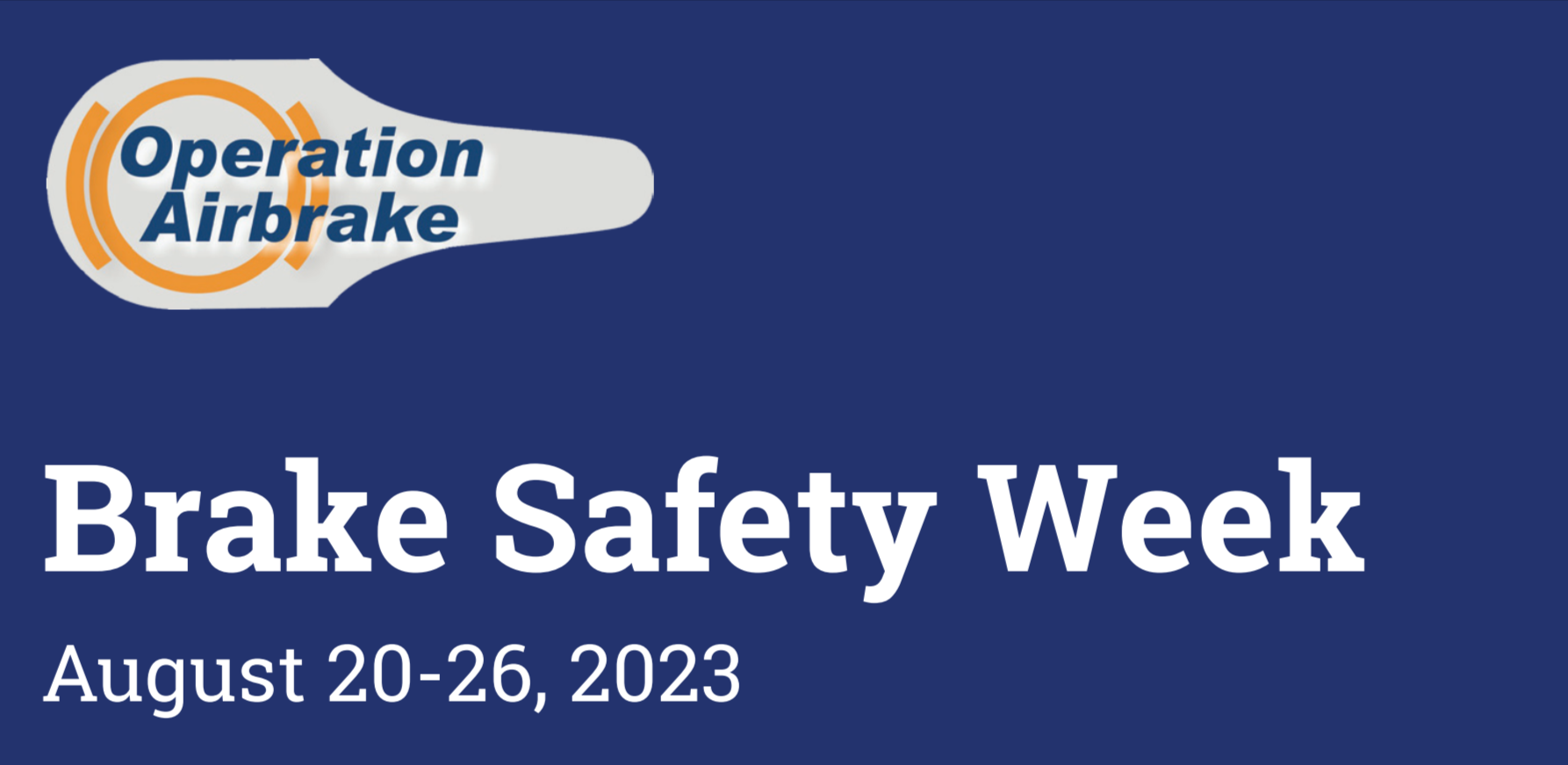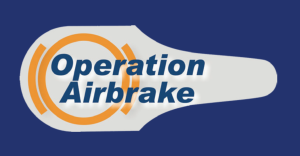Unveiling the Commercial Vehicle Brake Safety Campaign in North America

Last year’s Brake Safety Day led to the suspension of around 1,300 vehicles due to brake issues.
This spring, the Commercial Vehicle Safety Alliance’s (CVSA) annual Brake Safety Day witnessed inspectors discover critical brake-related vehicle inspection items on 11.3 percent of the examined vehicles. This intensive focus culminated in the suspension of 773 commercial vehicles, pending violation rectifications.
Notably, the previous year’s Brake Safety Day led to the cessation of approximately 1,300 commercial vehicles, accounting for 14 percent of those scrutinized, due to brake issues.
A One-Day Snapshot of Brake Systems Health

During the unexpected one-day inspection across Canada, Mexico, and the U.S., standard vehicle and driver inspections were carried out.
In this unannounced one-day enforcement and inspection blitz across Canada, Mexico, and the United States, commercial motor vehicle inspectors conducted standard vehicle and driver inspections. The obtained brake-related data provides a snapshot of the commercial motor vehicles’ brake systems state.
Enjoying our insights?
Subscribe to our newsletter to keep up with the latest industry trends and developments.
Stay InformedBrake-Related Out-of-Service Conditions
The brake-related out-of-service conditions reported from this campaign were primarily:
- 20 percent Brakes Violations
- Among the inspected vehicles, 479 had 20-percent brake violations. In these cases, the vehicle is considered out of service when 20 percent or more of its service brakes are in an out-of-service condition, exhibiting a defective brake.
- Other Brake Violations
- The CVSA reported 368 vehicles with other brake violations, including worn brake lines and broken brake drums.
- Steering Brake Violations
- Inspectors recorded 81 vehicles with steering brake violations, such as inoperative brakes and mismatched brake chambers.
Brake Safety Campaign Results by Country
- Canada
- Of the 894 total inspected commercial motor vehicles, 10 percent were placed out of service for brake-related violations.
- Mexico
- Six out of 34 inspected commercial motor vehicles (18 percent) had brake-related out-of-service violations.
- United States
- Inspectors placed 11.5 percent of the 5,901 total inspected commercial motor vehicles out of service for brake-related violations.

Among the inspected vehicles, 479 had 20-percent brake violations, which led to the vehicle being considered out of service.
Data Collection during Brake Safety Day
This year, 11.3% of inspected vehicles had critical brake-related violations, resulting in 773 vehicles being restricted from travel until rectifications were made.
The CVSA’s Brake Safety Day is an opportunity to gather extensive data relating to the health and wellness of brake systems on commercial motor vehicles. This year, the focus was on brake lining and pad violations.
Identifying Lining and Pad Violations
Of the 6,829 inspected commercial motor vehicles, inspectors identified 108 power unit and 87 towed unit lining and pad violations.
Assessing Vehicle Braking Efficiency with PBBTs
Eight of the CVSA member jurisdictions used performance-based brake testers (PBBTs) on Brake Safety Day, resulting in four vehicles (4.35 percent) placed out of service due to inadequate overall vehicle braking efficiency.
The Impact of Operation Airbrake
Operation Airbrake, a CVSA program, aims to improve commercial vehicle brake safety across North America.
Operation Airbrake, a CVSA program, aims to improve commercial motor vehicle brake safety across North America, working in partnership with the Federal Motor Carrier Safety Administration, the Canadian Council of Motor Transport Administrators, and Mexico’s Ministry of Infrastructure, Communications, and Transportation.
Annual Brake Safety Campaigns
Each year, Operation Airbrake holds two brake safety campaigns:
- Brake Safety Day
- An unannounced one-day brake safety inspection and enforcement initiative.
- Brake Safety Week
- A week-long scheduled campaign, set for Aug. 20-26 this year.
Both campaigns focus on identifying brake system violations, with the ultimate goal of reducing the number of highway crashes caused by defective braking systems on commercial motor vehicles.
In conclusion, the ongoing commitment to Commercial Vehicle Brake Safety across North America is evident through the thorough inspections, data collection, and initiatives such as Operation Airbrake. By prioritizing brake system health, commercial motor vehicles can ensure safer journeys on our highways.
Key Takeaways:
- The Commercial Vehicle Safety Alliance’s (CVSA) annual Brake Safety Day focuses on inspecting brake systems of commercial vehicles to identify potential issues and violations.
- This year, 11.3% of inspected vehicles had critical brake-related items, resulting in 773 commercial vehicles being restricted from travel until these violations were rectified.
- The top three brake-related out-of-service conditions were 20% brakes violations, other brake violations, and steering brake violations.
- The results by country revealed that 10% of inspected vehicles in Canada, 18% in Mexico, and 11.5% in the United States were placed out of service due to brake-related violations.
- The Brake Safety Day also provides an opportunity to gather additional data related to brake system health. This year, the focus was on brake lining and pad violations, with 108 power unit and 87 towed unit violations identified.
- Performance-based brake testers (PBBTs) were used to assess braking efficiency, resulting in 4.35% of vehicles being placed out of service due to inadequate overall vehicle braking efficiency.
- CVSA’s Operation Airbrake Program, in partnership with other North American transport bodies, holds two annual brake safety campaigns to conduct inspections andeducate relevant stakeholders about the importance of proper brake inspection, maintenance, and operation.
- The overarching goal of these initiatives is to reduce the number of highway crashes caused by faulty braking systems on commercial motor vehicles, emphasizing the significance of brake safety in maintaining road safety.
When inspectors conduct the brake portion of a Level I or Level V Inspection, they will:
- Check for missing, non-functioning, loose or cracked parts.
- Check for contaminated, worn, cracked and missing linings or pads.
- Check for S-cam flipover.
- Listen for audible air leaks around brake components and lines.
- Check that slack adjusters are the same length (from center of S-cam to center of clevis pin) and the air chambers on each axle are the same size.
- Ensure the brake system maintains air pressure between 90-100 psi (620-690 kPa) and measure pushrod travel.
- Inspect for non-manufactured holes (e.g., rust holes, holes created by rubbing or friction, etc.) and broken springs in the spring brake housing section of the parking brake.
- Inspect required brake system warning devices, such as anti-lock braking system (ABS) malfunction lamp(s) and low air-pressure warning devices.
- Inspect the tractor protection system, including the bleedback system on the trailer.
- Ensure the breakaway system is operable on the trailer.
Explore More on These Related Topics
- Stay updated with the latest rules and regulations governing the transportation industry. Discover our articles on Transportation Regulations.
- Stay updated with the latest events in the trucking industry, explore our detailed coverage of Events.
- Discover more about the measures and strategies aimed at ensuring highway safety. Visit our comprehensive articles on Highway Safety.
- From trends to challenges, get the latest insights about the trucking industry. Browse our extensive coverage on the Trucking Industry.
- Understand the different types of violations and their impact on safety in the trucking industry. Check out our detailed articles on Violations.
Industry Resources and Brake Safety Information
- Explore the detailed CVSA vehicle inspection checklist focusing on brake safety in Level I and Level V Inspections.
- Prepare for Brake Safety Week 2023 with this handy flyer, providing 10 tips on maintaining optimal brake lining/pad health.
- Understand the comprehensive inspection procedures endorsed by the CVSA.
- Review the results from previous brake safety campaigns to learn about progress and improvements.
- Stay updated on safety protocol with the latest inspection bulletins from the CVSA. Take note of the eight bulletins specifically addressing brake safety. These bulletins provide critical information to enhance existing inspection programs.






















